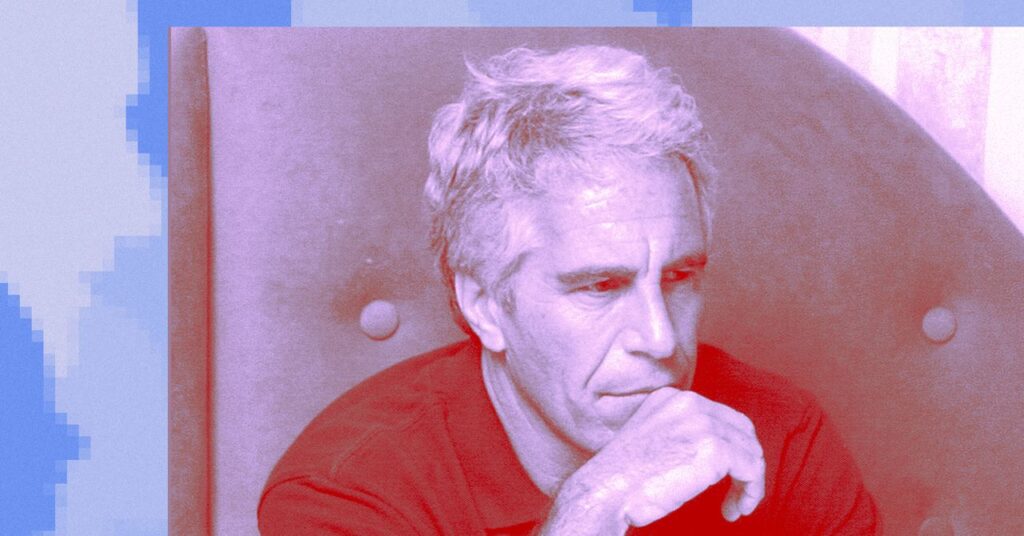Inside Jeffrey Epstein’s Forgotten AI Summit
In 2002, artificial intelligence was still in winter. Despite decades of effort, dreams of bestowing computers with humanlike cognition and real-world understanding had not materialized. To look for a way forward, a small group of scientists gathered for “The St. Thomas Common Sense Symposium.” AI pioneer Marvin Minsky was the central presence, along with his protégé Pushpinder Singh. After the symposium, Minsky, Singh, and renowned philosopher Aaron Sloman published a paper on the group’s ideas for how to reach humanlike AI.
The paper speaks to the struggles of early-century AI. But one sentence truly stands out today. In a brief paragraph of acknowledgements, the authors say, “This meeting was made possible by the generous support of Jeffrey Epstein.” The symposium itself, in fact, was held in the Virgin Islands, home of Epstein’s now-notorious island retreat. Looking back at this event reveals something about the state of AI—as well as the symposium’s execrable funder.
To the shame of the technology and science communities, a voracious sexual predator managed to buy his way into relationships with some of the most prominent and influential figures in the field. Epstein’s connections, which included Bill Gates and Minsky, have been exhaustively documented. In a deposition, Epstein survivor Virginia Giuffre alleged she was directed to have sex with Minsky at Epstein’s island; Minsky’s wife—who says she accompanied the scientist when he visited Epstein and that they only went to the New York and Palm Beach residences—has vehemently denied the charge, which was made shortly before Minsky’s death and was not revealed until much later. Epstein died in prison in 2019 (don’t ask me to break down the conspiracy theories in one measly parenthesis), and Giuffre tragically took her own life in 2025.
For the vast majority of Epstein’s connections in science and tech, professional association with a sexual predator became an embarrassing, even damning, fact. Epstein penetrated the inner circles of these worlds, funding small gatherings attended by bold-faced names. (I myself was at the notorious 2002 “Billionaire Dinner” at TED where Epstein mingled with Sergey Brin, Jeff Bezos, Rupert Murdoch, singer Naomi Judd, and prominent scientists, including some who flew in on Epstein’s plane.) One entry point to those circles was literary agent John Brockman, whose client list included top names in science. Epstein largely funded Brockman’s nonprofit science-oriented foundation.
A source of mine who knew Epstein well explained that the financier appeared genuinely fascinated by scientists. The source claims to have no knowledge of his crimes. They agreed to discuss Epstein only on the condition of anonymity. “I experienced him as this eccentric, wealthy guy who liked to surround himself with interesting people and scientists and who had a lot of questions about the world,” the source says. “He was as interested in the personality of the scientist as he was with the scientist’s work.” Epstein himself apparently understood why he was welcomed in those circles. “I’m not more than a hobbyist in science,” he told journalist Jeffrey Mervis in 2017. “But money I understand, [and] I’m a pretty good mathematician.”
Invite Only
Epstein’s spectre casts a dark shadow on the 2002 symposium. But how did the event even come to be? My source gave me the previously unreported backstory. “Jeffrey used to say how fond he was of Marvin and how much he loved talking to him about AI,” the source says. In those years, the subject wasn’t very popular. “It was a time when people were really skeptical about whether AI had legs,” my source said. So the idea arose to host a small AI gathering with Minsky at the center. (It’s not clear whether the funding for the event came from a $100,000 donation made by Epstein to support Minksy’s research.)
After some deliberation, it was decided the event would center on ideas from Minsky’s star student, Singh. In 1996, Singh had written a short paper called “Why AI Failed.” To get humanlike intelligence, he argued, “we need systems with common-sense knowledge and flexible ways to use it. The trouble is that building such systems amounts to ’solving AI.’” As tough as that is, he wrote, “we have no choice but to face it head on.” (Bill Gates saw the paper and commented, “I think your observations about the AI field are correct.”)
Presumably, the St. Thomas symposium was one way to face the problem head-on. But the event was hard to organize. An early list of possible participants lacked star power and had to be augmented. Eventually, the guest list grew to include Roger Schank, a celebrated AI theorist whose obituary was marred by attending the event and by serving a brief spell as chief learning officer of Trump University. Another participant was Doug Lenat, the inventor of the ambitious CYC project, which involved humans painstakingly typing explanations of everyday objects into a database for AI research. Also in attendance was Vernor Vinge, a science fiction writer who is credited with the concept of the AI singularity. UK philosopher Sloman, now approaching 90, was one of the later additions. “I was not on Epstein’s original invitation list,” he emailed me earlier this week. “I was added at the suggestion of Marvin Minsky, partly because by then I was helping to supervise his student (Push Singh).” Sloman says his memory of the event is weak. But, he recalls, “I seem to remember that Epstein provided lavish resources, including using a private plane to get us to the location.”

